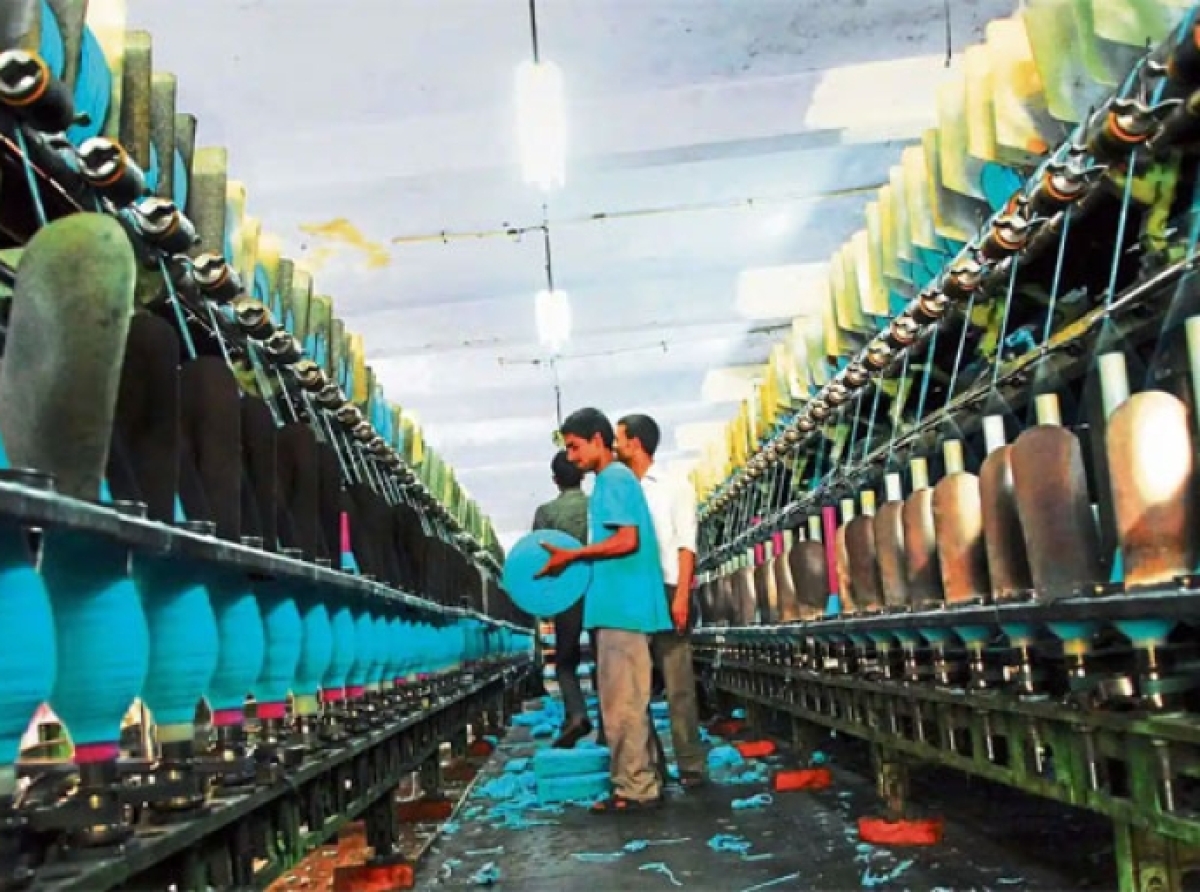10 May 2023, Mumbai
As businesses begin to release their financial information, a credit rating agency predicted on Thursday that India Inc. would likely report a halving of revenue growth in the fourth quarter of FY23.
According to Crisil's Market Intelligence and Analytics division, the revenue growth will drop to 10–12% from 22.8–% for last year's January–March period.
Ground reality
Indian textile companies are facing a challenging environment due to multiple headwinds. The industry needs to focus on cost optimization and innovation to stay competitive.
Moreover, adopting digital technologies can help improve efficiency and agility in the supply chain, enabling companies to respond to market changes quickly. While government support is necessary, companies must also take proactive steps to navigate the current crisis.
How are the financials stacked up
According to the report, revenue is predicted to have increased by 19–21% for the entire fiscal year FY23, less than the above 27% growth seen in FY22. The operating margin is also predicted to have slowed by 3 percentage points.
The major causes of the substantial deceleration in topline growth for Q4FY23 were noted as the high base and the ongoing export challenges that have impacted volume growth, according to Crisil, which examined 300 businesses from 47 different industries to determine the expectations.
Snapshot
According to the report, sales from export-focused industries and commodities such as textiles, gems and jewelry, and information technology-enabled services decreased year over year.
Steel goods, which make up about 11% of the set's income, are predicted to have had a 7-9% year-over-year revenue decline during the March quarter as a result of the application of an export charge in May 2022 and a reduction in worldwide demand due to higher input costs.
Similarly, it stated that the aluminum industry should have seen a 17–19% decline in revenue due to weak global demand. Ankit Dani, the company's research director, stated that while the need for consumer necessities like pharmaceuticals and fast-moving consumer goods (FMCG) continued to expand, consumer discretionary products like airlines, hotels, media and entertainment, and retail were the main drivers of revenue growth.
Thesis
According to the CRISIL SME Tracker, the textile sector in India is expected to sustain the growth it experienced in Financial Year (FY) 2021-22 and recover from the lows it faced during the onset of the pandemic. This growth is due to an improvement in demand for textile products as economic recovery is felt internationally.
The Indian textile sector has also benefited from the US ban on China's Xinjiang cotton, and this trend is expected to continue in the medium term. However, the impact of the Russia-Ukraine crisis remains a concern and needs to be monitored.
In FY21, the cotton yarn market is expected to grow at an impressive rate of 38-42 percent, led by exports, which rapidly picked up from the second quarter. This market is anticipated to grow a further 8-12 percent year-on-year in the upcoming fiscal year due to sustained recovery in both domestic and export markets.
In contrast, Readymade garments (RMG) faced a decline in the previous financial year, but the projection for this year is a growth of 16-20 percent, with a further increase of 13-18 percent expected in FY23. The reopening of offices, commercial premises, and educational institutions is the key driver of this growth.
Furthermore, with the heightened focus on health and hygiene brought on by the pandemic, the home textiles segment is also expected to grow in the upcoming fiscal year.
Overall, the Indian textile sector's growth is driven by improving demand, increased exports, and a focus on health and hygiene, and this trend is expected to continue in the upcoming fiscal year. However, the Russia-Ukraine crisis's impact remains a concern that needs to be monitored closely.
Various important textile parks
The Mega Integrated Textile Region and Apparel (MITRA) Park scheme, valued at Rs. 4,445 crores (US$ 594.26 million), was approved by the government to establish seven integrated mega textile parks with cutting-edge infrastructure, shared utilities, and R&D labs over three years to give impetus to this sector performance.
Promotion agencies
Similar to Tiruppur, the Indian government plans to create 75 textile centers that will significantly enhance employment prospects, encourage the export of textile goods, and ensure the use of environmentally friendly technology.
In conjunction with handloom exporters and weavers, the Handloom Export Promotion Council (HEPC) participates in several international fairs and events to promote the export of handloom items worldwide in support of the National Handloom Development Programme (NHDP).
In addition, the Ministry of Textiles has been executing the National Handloom Development Programme (NHDP)'s Handloom Marketing Assistance (HMA) component all over India.
Through the organization of expos and events in domestic and international markets, HMA develops and promotes the marketing channel by giving handloom weavers and agencies a platform to sell their goods directly to consumers.
The recent trade pacts are also likely to give a fillip to Indian textile exports case in point are India-Australia & India-UAE anticipated to ramp up total textile exports considerably.
Bird's eye view
Textile exports have also been affected due to the ongoing pandemic. As per the latest data, India's textile and apparel exports declined by 20% to $27 billion in FY22, compared to $34 billion in FY19. The industry is urging the government to provide support and incentives to overcome the current crisis.
The Q4FY23 results of Indian textile companies have raised alarms as the industry faces multiple challenges. Rising input costs, supply chain disruptions, and sluggish demand have impacted the profitability of the sector. The Q4FY23 results indicate that Indian textile companies are grappling with margin pressures due to higher input costs and supply chain disruptions.
Cautious optimism; For the clothing and textile sectors (RTW) combine, the outlook is cautious given the buoyant domestic demand and moderating raw materials prices when the inflationary pressures have byfar eased and the supply side is broadly stabilized post-pandemic but the elephant in the room is the global challenging demand environment.

























